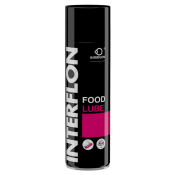mitch brown
Member
Can someone tell me how to tella durst 138 from a 138S
thanks
thanks
Can someone tell me how to tella durst 138 from a 138S
thanks
I would recommend you use this particular lubricant extensively: Interflon Fin Super (advanced teflon oil, not grease). Use this particular one, just try it. It will help to remove internal solidified grease and it will provide a long term lubrication like no other product.
https://interflon.com/products/interflon-fin-super-aerosol
A long term lubricating oil that contains vegetabile oil makes me wonder, I already have issues with mineral oils becoming smelly after few years. I do not need vegetabile oils resinating. (Well, I know vegatabile oils that remain stable longer than others.)

Actual industrial lubricants derived from vegetable molecules are something else entirely, and hypothetically appropriate, and will not need thinning with anything additional. But none of these that I've personally tested held up for very long.
AFAIK, the 138 has a tapered bellows and a fixed lens turret that is not interchangeable. The 138S has a square bellows and the 3 lens turret (tripla) which is interchangeable with the single lens Unipla board. I think those are the main differences. Mine is an SM-183 with the 138S camera, so I'm not that familiar with differences with the chasis.
This Durst manual, and my own personal experience working with/ maintaining a 138S with tapered bellows and a fixed lens turret suggest that you might be drawing the wrong conclusions. I think the 138 was the model before the foot operated table & with the pre-NEGA 138 carrier.
| Photrio.com contains affiliate links to products. We may receive a commission for purchases made through these links. To read our full affiliate disclosure statement please click Here. |
PHOTRIO PARTNERS EQUALLY FUNDING OUR COMMUNITY:  |


